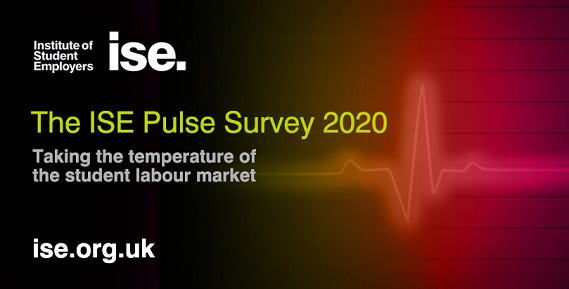Tristram Hooley, Chief Research Officer at the Institute of Student Employers, considers the findings from the recent Pulse Survey and concludes that the future of the student labour market is hanging in the balance.
Figuring out what is going on in the labour market is always a challenge. The labour market isn’t one thing that we can measure, rather it is the conglomeration of millions of decisions made by businesses and individuals about employment. One of the main tasks that we perform at the ISE is to try and draw together some of the patterns in the labour market and make sense of them. The main tool that we have for doing this is surveying our members.
At the end of the summer we asked members to report on how things went last year. In general people reported that they had experienced a good year, with recruitment substantially up (by about 10% for graduates and 7% for non-graduates). But we are nwow well into a new recruitment cycle.
This cycle began with us getting a new Prime Minister, continued with a noisy election campaign and will, most likely, finally see us entering the next stage of the Brexit process. So, are employers still feeling positive and increasing their recruitment?
A stagnant labour market?
During December we surveyed ISE members and other similar employers to ask them about their recruitment targets for this season. In general employers continued to predict growth in the labour market, albeit at a much-reduced level. They were planning to recruit 3% more graduates and 2% more non-graduates than last year.
When planned growth is this small, it is worth digging into the figures a bit more. We also asked employers what proportion of their target vacancies from last year they had failed to fill. They reported that they under-recruited graduates last year by 3% and non-graduates by 4%. If these patterns of under-recruitment hold for this year then the student labour market might finish the year stagnant (with no growth) or even in decline.
Concern about stagnancy is increased when we break the figures down by sector. Recent government announcements on spending increases in the police force and the NHS are influencing public sector recruitment. However, if we remove the public sector from the picture, the graduate labour market looks much more likely to go into decline, with the energy, engineering and industry, and built environment sectors both predicting a bad year.
Geographical changes
Changes in the overall volume of student recruitment are not the only issues impacting on the market this year. As well as some concerns about the level of recruitment, there are also some indications that the geographical location of student recruitment might be shifting. Twenty-one per cent of employers are considering moving some of their early career staff numbers out of London, more than double those looking at moving numbers into London. While 11% of employers are considering moving some of their early career staff numbers out of the UK, more than double the number are considering moving numbers into the UK.
What does this mean?
Our Pulse Survey is a good indication of what way the student recruitment market is moving. It is about what employers are planning and so we should expect that the final picture might change before we get to the end of the year. If business picks up and we see a Boris or Brexit Bounce, we may find that employers adjust their recruitment upwards and the overall market enjoys another year of growth.
On the other hand, if Brexit doesn’t go particularly well, the government hits a crisis, or wider factors lead to an economic downturn, it is also possible that the student labour market will stagnate or go into decline. At the moment this is more of a case of employers being cautious than an indication of a recession, but there are a lot of economic and political pieces on the move.
Given this picture, students who are entering the labour market may find that the environment gets more challenging. But, whatever happens it is important not to panic. The overwhelming majority of employers in our survey are still recruiting both graduates and non-graduates and so there are still likely to be lots of opportunities out there for the right candidates.


0 Comments